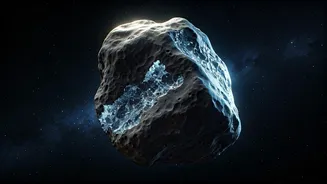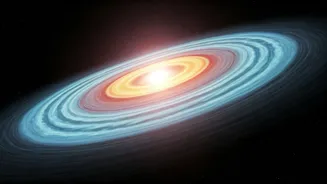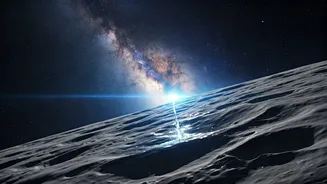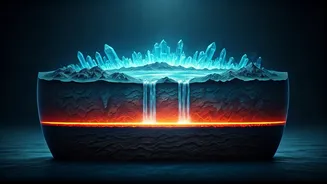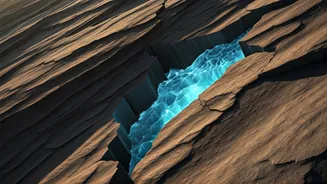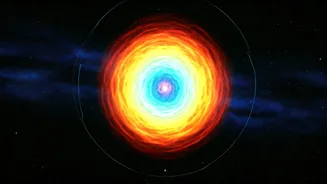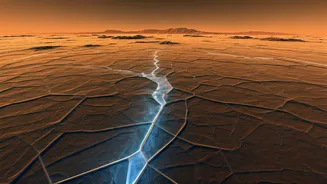Ryugu Asteroid Secrets
The Japan Aerospace Exploration Agency (JAXA) Hayabusa2 mission brought back samples from the Ryugu asteroid, and they've been providing scientists with
an amazing view into the past. Analysis of these samples has revealed that water existed and flowed on the asteroid for about a billion years. These findings are important because they give scientists a unique chance to study the building blocks of our solar system and the origins of water, a fundamental component for life. The presence of water is crucial as it supports the possibility of life beyond Earth. The research on Ryugu's water history suggests the asteroid was active and changed over time, potentially impacting our understanding of how planets and other celestial bodies evolve. Scientists are excited about this new research because it helps us understand the evolution of water and organic matter in space, potentially leading to new insights into the universe's origin.
Water's Billion-Year Journey
The discovery of water flow on Ryugu is based on detailed studies of the asteroid samples, including their mineral composition and the presence of hydrated minerals. The samples show that the water activity went on for a very long period, roughly one billion years. This indicates that Ryugu experienced various events, like heating and reactions involving water, which transformed the asteroid's surface materials. Scientists believe that this water activity was possible due to the presence of ice within Ryugu, potentially heated by radioactive decay of elements or impacts from space objects. This long-lasting water flow indicates that asteroids can undergo substantial changes over time, affecting their internal composition and surface features. Such changes are very important as the water helped distribute the materials and change the surface in time. This has significant implications for how we perceive the role of asteroids in the delivery of water and organic compounds to other celestial bodies, like early Earth.
Implications for Solar System
The Ryugu water discovery has wide-ranging implications for understanding the solar system's development. By looking at the samples, scientists can learn more about how water and organic compounds were delivered to the inner solar system, including Earth. It helps determine if asteroids played a vital role in delivering these life-supporting elements to our planet. The continuous water flow over a billion years has implications for understanding how water-bearing asteroids and comets may have contributed to the origin of life on Earth. The research enables scientists to evaluate current models of solar system evolution. By studying Ryugu's materials, scientists gain insights into the physical and chemical conditions of the early solar system. Understanding the evolution of these water-rich bodies is very important. This also helps in assessing the habitability of other celestial bodies and in searching for signs of life beyond Earth.
Future Research Directions
The Ryugu samples will continue to be a focus for the scientific community for years to come. Future research will involve more detailed analysis using advanced techniques to understand water interaction and its effects on the asteroid's materials. Scientists will try to pinpoint the exact sources and the mechanisms driving water activity, seeking further evidence. There will be comparative studies between Ryugu and other asteroids. This study will expand our knowledge of how water content varies across the solar system, shedding light on the history of planet formation. They also aim to compare Ryugu's findings with information gathered from other space missions, such as the OSIRIS-REx mission to asteroid Bennu. This comparison will provide a more extensive view of the diversity and evolution of asteroids. All these explorations will increase our comprehension of the conditions supporting the formation of life in the universe.
